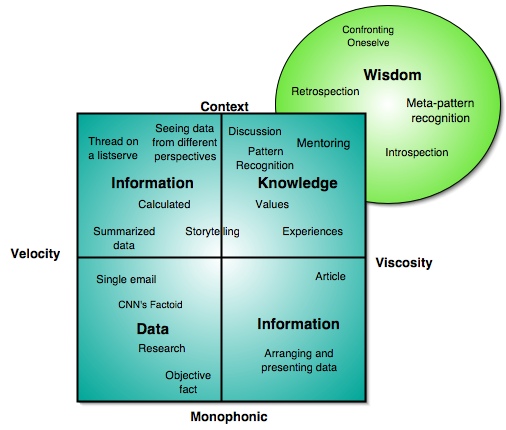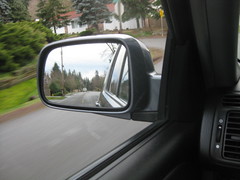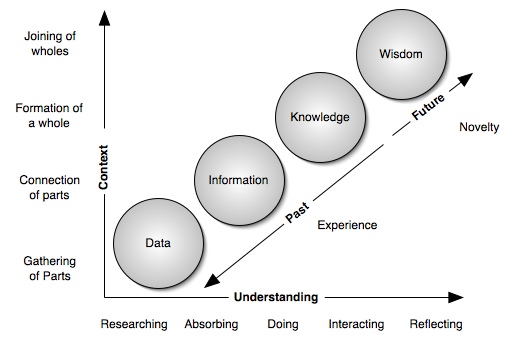Wisdom
Wisdom is the principal thing; therefore get wisdom; and with all thy getting get understanding. - Proverbs 4:7
Wisdom is the ultimate level of understanding. We achieve this level when we see enough patterns and meta-patterns in our knowledge base that we are able to synthesize and then use them in novel ways (Wurman, 2001). Patterns can be classified as (Aldo de Moor, 2006):
- Goal patterns — represent objectives
- Communication patterns — describe communicative interactions
- Information patterns — conceptualize knowledge obtained from knowledge analysis activities
- Task patterns — define which information patterns are associated with particular steps in a process
- Meta-patterns — are conceptual in nature and used for interpreting, validating, linking, and assessing the quality of other patterns
Once we have gathered enough patterns on a task or subject and link them together, we are then able to make inferences for interpreting, assessing, and predicting new uses for the patterns.
We can be knowledgeable with other men's knowledge, but we cannot be wise with other men's wisdom. — Michel de Montaigne
As noted by Montaigne, wisdom is not easily passed from one person to another as it must be worked for by building enough patterns as described above; however, recognizing and valuing the wisdom in others will help us to define a framework for achieving it.

One method of helping to identify all the patterns linked to a particular task or subject is to use more of a whole-brain-thinking method.
When information is brushed against information...the results are startling and effective. The perennial quest for involvement, fill-in, takes many forms. - Marshall McLuhan in The Medium is the Massage: An Inventory of Effects (1967).

And the reason information can be startling, is that it often allows one to see forward. “The past went that-a-way. When faced with a totally new situation, we tend to always to attach ourselves to the objects, to the flavor of the most recent past. We look at the present through a rear-view mirror. We march backwards into the future“ wrote Marshall McLuhan.
Putting together the puzzles of patterns allows us to take our eyes off the rear-view mirror by brushing new information with our present knowledge base—which allows us to predict.
Next Step
Click on the various parts of the chart to learn more about that topic

References
Aldo de Moor. (2006). Towards more Effective Collaboration Workspaces: From Collaboration
Technologies to Patterns. Referenced from Pattberg, J., Fluegge, M. Towards an ontology of collaboration patterns. Retrieve May 6, 2010 from http://subs.emis.de/LNI/Proceedings/Proceedings120/gi-proc-120-007.pdf
Wurman, S. (2001). Information Anxiety 2. Indianapolis: Que.

